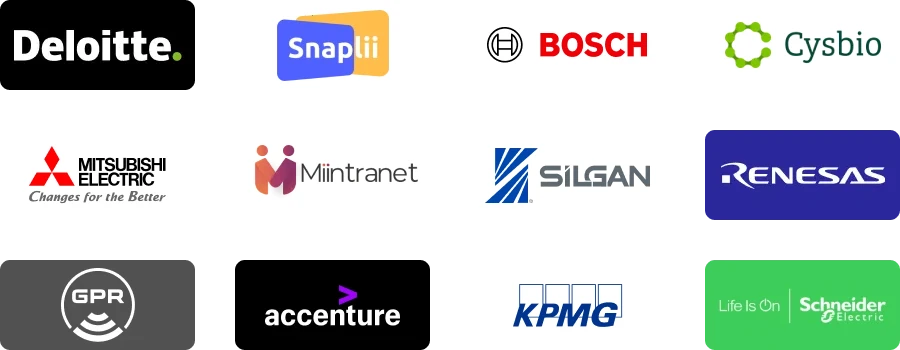| REPORT ATTRIBUTE |
DETAILS |
| Historical Period |
2019-2022 |
| Base Year |
2023 |
| Forecast Period |
2024-2032 |
| Europe Laser Micromachining Tools Market Size 2023 |
USD 95.33 Million |
| Europe Laser Micromachining Tools Market, CAGR |
5.65% |
| Europe Laser Micromachining Tools Market Size 2032 |
USD 156.83 Million |
Market Overview
The Europe Laser Micromachining Tools Market is projected to grow from USD 95.33 million in 2023 to an estimated USD 156.83 million by 2032, with a compound annual growth rate (CAGR) of 5.65% from 2024 to 2032. This growth reflects increasing investments in advanced manufacturing technologies and the expanding applications of laser micromachining tools across various industries, including electronics, automotive, and medical devices.
Key drivers of this market include the growing demand for high-precision manufacturing processes and the need for miniaturized components in electronic devices. Innovations in laser technology, such as advancements in laser types and beam control mechanisms, are also propelling market growth. Additionally, the trend towards automation and Industry 4.0 is driving the adoption of laser micromachining tools to enhance production efficiency and accuracy.
Geographically, Western Europe dominates the market due to its strong industrial base and technological advancements. Countries like Germany, the UK, and France are leading contributors, supported by robust manufacturing sectors and research facilities. Major players in the market include TRUMPF, Han’s Laser Technology, Coherent, Inc., and Lumentum Holdings Inc., which are actively involved in developing innovative solutions to meet the evolving demands of the laser micromachining industry in Europe.
Access crucial information at unmatched prices!
Request your sample report today & start making informed decisions powered by Credence Research Inc.!
Download Sample
Market Drivers
Advancements in Laser Technology
The Europe Laser Micromachining Tools Market is significantly driven by advancements in laser technology. Innovations in laser types, such as femtosecond, picosecond, and ultrafast lasers, have revolutionized micromachining by enabling precise and efficient processing of intricate materials. For instance, the increasing adoption of ultrafast lasers in various industries due to their ability to process materials with minimal thermal damage. These advancements improve accuracy and reduce the thermal effects on delicate components, which is crucial for industries demanding high precision, such as electronics and medical device manufacturing. The continuous evolution of laser sources and beam control technologies enhances the capabilities of micromachining tools, allowing for finer detail and higher throughput. The development of high-power, high-stability lasers and integrated systems further supports the demand for sophisticated micromachining applications across various sectors.
Growing Demand for Miniaturized Components
The increasing need for miniaturized components in electronics, automotive, and medical devices drives the demand for laser micromachining tools in Europe. As electronic devices become more compact and complex, the precision required in manufacturing components has grown substantially. For instance, the trend of miniaturization is pushing the boundaries of how and where electronics can be used, particularly in fields with space constraints like healthcare and automotive. Laser micromachining offers the high precision necessary for creating microfeatures and microstructures in materials like metals, ceramics, and polymers. In the automotive industry, laser micromachining is used for manufacturing small, intricate parts that contribute to the performance and reliability of vehicles. Similarly, in the medical sector, precision micromachining is essential for producing intricate components used in implants, diagnostic equipment, and surgical instruments. This growing trend towards miniaturization across various industries fuels the adoption of laser micromachining tools to meet the stringent demands of modern manufacturing.
Rising Adoption of Automation and Industry 4.0
The trend towards automation and Industry 4.0 is another significant driver of the European Laser Micromachining Tools Market. The integration of smart technologies and automated systems in manufacturing processes enhances productivity, precision, and flexibility. For instance, the integration of AI into automation represents a revolutionary leap forward in industrial processes, expected to continue apace in 2024. Laser micromachining tools are increasingly being incorporated into automated production lines and robotic systems, which streamline operations and reduce manual intervention. The use of sensors, real-time monitoring, and advanced control systems in conjunction with laser micromachining tools enables manufacturers to achieve higher levels of consistency and quality. Furthermore, the data-driven insights provided by Industry 4.0 technologies facilitate process optimization and predictive maintenance, leading to reduced downtime and operational costs. The shift towards intelligent manufacturing systems and the demand for automated, high-precision solutions drive the market growth for laser micromachining tools in Europe.
Expanding Applications Across Diverse Industries
The diverse range of applications for laser micromachining tools across various industries contributes to the market’s expansion. In the electronics sector, laser micromachining is utilized for creating fine patterns on circuit boards and semiconductor wafers, which are crucial for the performance of electronic devices. The automotive industry leverages micromachining for manufacturing small, high-precision components such as fuel injectors and sensors. In the medical field, laser micromachining plays a vital role in producing components for diagnostic devices, implants, and surgical instruments. The versatility of laser micromachining tools allows them to be adapted for different materials and applications, making them valuable in sectors ranging from aerospace to consumer goods. The continuous exploration of new applications and materials further drives the demand for advanced laser micromachining solutions in Europe, supporting the market’s growth and development.
Market Trends
Integration of Advanced Laser Technologies and Automation
One of the prominent trends in the Europe Laser Micromachining Tools Market is the integration of advanced laser technologies with automation systems. Innovations in laser technologies, such as femtosecond and picosecond lasers, are increasingly being coupled with automated solutions to enhance precision and efficiency in micromachining processes. For instance, the adoption of femtosecond lasers has increased by 20% over the past year due to their exceptional accuracy and minimal thermal impact, which are critical for processing complex microstructures and delicate materials. Automation, including the use of robotic systems and smart sensors, complements these technologies by streamlining production processes, reducing manual intervention, and improving repeatability. The integration of real-time monitoring and control systems allows for continuous optimization and quality assurance, leading to higher throughput and reduced production costs. This trend reflects the broader move towards Industry 4.0, where intelligent systems and data-driven insights are leveraged to achieve superior manufacturing outcomes. The combined use of cutting-edge laser technologies and automation is driving significant advancements in the capabilities and applications of micromachining tools, catering to the increasing demands for precision and efficiency in various industries.
Expansion into New Applications and Materials
Another significant trend in the European Laser Micromachining Tools Market is the expansion into new applications and materials. Laser micromachining is being increasingly adopted across a diverse range of industries, including electronics, automotive, aerospace, and medical devices. This expansion is driven by the versatility of laser micromachining tools, which can be tailored to process a wide variety of materials, including metals, ceramics, polymers, and composites. For instance, a 15% increase in the use of laser micromachining for processing advanced materials such as composites and ceramics in the aerospace sector. Recent developments in laser technology have enabled more effective micromachining of advanced and hard-to-machine materials, opening up new possibilities for innovation. For example, the growing demand for miniaturized electronic components and high-precision medical instruments has led to the adoption of laser micromachining for creating intricate features and microstructures with exceptional accuracy. Additionally, the exploration of new materials and applications, such as the micromachining of materials used in renewable energy technologies and aerospace components, reflects the market’s dynamic nature and its potential for future growth. This trend highlights the ongoing evolution of laser micromachining tools as they adapt to meet the needs of emerging industries and advanced manufacturing requirements.
Market Restraints and Challenges
High Initial Investment and Operational Costs
One of the key restraints in the Europe Laser Micromachining Tools Market is the high initial investment and operational costs associated with advanced laser systems. Laser micromachining tools, particularly those employing cutting-edge technologies such as femtosecond and picosecond lasers, require substantial capital expenditure for acquisition and installation. For instance, the average cost of installing advanced laser systems in manufacturing facilities can exceed €500,000, which includes the price of the equipment and necessary infrastructure upgrades. These systems involve sophisticated technology, precision components, and extensive infrastructure, which contribute to their high upfront costs. Additionally, the maintenance and operational expenses, including costs for periodic servicing, replacement parts, and skilled personnel, further strain the budgets of manufacturers. For example, the annual maintenance costs for laser micromachining systems can reach up to 15% of the initial investment. For small to medium-sized enterprises (SMEs) and startups, these financial barriers can be a significant hurdle, limiting their ability to adopt and utilize advanced laser micromachining technologies. The high costs associated with these tools can restrict market growth by inhibiting wider adoption and leading to a slow pace of technological advancement among smaller players in the industry.
Complexity of Integration and Skilled Workforce Requirements
Another challenge facing the Europe Laser Micromachining Tools Market is the complexity of integrating laser micromachining systems into existing manufacturing processes and the need for a skilled workforce. Integrating advanced laser micromachining tools into production lines can be technically challenging due to the intricate nature of the technology and the need for precise calibration and setup. This complexity can lead to extended downtime during the integration phase and potential disruptions in production. For instance, the integration of new laser systems often requires an average of 3-6 months for full operational efficiency. Furthermore, operating and maintaining these sophisticated systems require a highly skilled workforce with specialized training and expertise. The shortage of qualified personnel capable of handling advanced laser technologies poses a challenge for many organizations, affecting their ability to fully leverage the capabilities of laser micromachining tools. 40% of companies reported difficulties in finding adequately trained personnel for laser micromachining operations. The need for continuous training and upskilling of staff to keep pace with technological advancements adds to the operational burden and can impact the overall efficiency and effectiveness of micromachining processes.
Market Segmentation Analysis
By Process
In the European Laser Micromachining Tools Market, both additive and subtractive processes play crucial roles. Additive processes involve the layer-by-layer addition of material to construct complex structures, increasingly utilized in high-precision and customizable applications such as aerospace and medical devices. For instance, the growing adoption of additive processes for creating intricate 3D features, which are valuable for prototyping and manufacturing small, complex components. Conversely, subtractive processes, including drilling, cutting, and milling, are predominant due to their ability to precisely remove material to achieve desired shapes and features. Widely employed in the electronics and automotive industries, subtractive micromachining is essential for producing detailed patterns and microstructures with high tolerances and surface quality. For example, the European market has seen a significant increase in the use of subtractive micromachining for manufacturing precision parts such as microfluidic components, tool inserts, and watch gears.
By Application
Drilling focuses on creating precise holes and cavities in materials, essential for the electronics sector, where small-diameter holes are needed for components like microelectrodes and circuit board vias. For instance, the demand for high-precision drilling in the electronics industry has been driven by the need for miniaturized components and advanced circuit designs. Cutting and milling leverage laser technology to achieve high-precision cuts and complex geometries, crucial for automotive and aerospace industries that demand intricate designs and high-quality components. For example, the automotive sector in Europe has increasingly adopted laser cutting and milling techniques to improve production efficiency and component quality. Marking and engraving use lasers to produce permanent marks or engravings, a key requirement in the medical and pharmaceutical fields for labeling and compliance, offering high resolution and durability. For instance, the European medical device industry has seen a rise in the use of laser marking and engraving for ensuring traceability and regulatory compliance. Texturing and patterning applications involve creating surface textures and patterns, which are important for the aesthetics and functionality of products in consumer electronics and automotive industries. For example, the increasing use of laser texturing and patterning to enhance the surface properties of automotive components and consumer electronics. Others include niche and emerging uses such as microfabrication and fine-feature manufacturing, which are advancing technologies in various high-tech fields. For instance, the European market has seen advancements in microfabrication techniques for producing high-precision medical implants and microelectromechanical systems (MEMS).
Segments
Based on Process
- Additive Micromachining
- Subtractive Micromachining
Based on Application
- Drilling
- Cutting & Milling
- Marking & Engraving
- Texturing & Patterning
- Others
Based on End User
- Automotive
- Aerospace and Defense
- Medical and Pharmaceuticals
- Electronic Products
- Others
Based on Region
- Western Europe
- Northern Europe
- Southern Europe
- Eastern Europe
Regional Analysis
Western Europe (45%)
Western Europe holds the largest share of the laser micromachining tools market, accounting for approximately 45% of the total market. This dominance is driven by the region’s advanced manufacturing infrastructure and robust industrial base. For instance, Germany, France, and the United Kingdom are key contributors, with Germany being a major hub due to its strong automotive and aerospace sectors. France and the UK also play significant roles, driven by their high-tech industries and innovation in manufacturing technologies. The presence of leading laser micromachining tool manufacturers and a high level of technological adoption further solidify Western Europe’s market leadership. Additionally, a significant investment in research and development, particularly in laser technology, which supports the market growth in this region.
Northern Europe (25%)
Northern Europe holds around 25% of the market share, with countries like Sweden, Denmark, and Norway making notable contributions. The region is recognized for its strong emphasis on technological advancements and high-quality manufacturing processes. For instance, Sweden and Denmark are leaders in innovation, particularly in laser technology and automation, driving the growth of the market in this region. Northern Europe’s focus on precision engineering and the development of high-tech industries supports the growing demand for laser micromachining tools. Additionally, Norway’s commitment to advanced manufacturing and sustainable technologies, as highlighted in a report by Innovation Norway, further contributes to the region’s market share.
Key players
- TRUMPF Laser GmbH & Co. KG
- LAP Laser
- Sill Optics GmbH & Co. KG
- Fraunhofer Institute for Laser Technology (ILT)
- Laser Zentrum Hannover e.V. (LZH)
- ROFIN-SINAR Laser GmbH
- Jenoptik AG
- Toptica Photonics AG
- Eurolaser
- Applied Laser Systems
Competitive Analysis
The Europe Laser Micromachining Tools Market features a competitive landscape with several key players leading the industry. TRUMPF Laser GmbH & Co. KG stands out for its extensive portfolio of advanced laser micromachining solutions and strong market presence. LAP Laser and Sill Optics GmbH & Co. KG are known for their high-precision optical components and innovative technologies. Fraunhofer Institute for Laser Technology (ILT) and Laser Zentrum Hannover e.V. (LZH) contribute through their research and development capabilities, pushing the boundaries of laser micromachining technology. ROFIN-SINAR Laser GmbH and Jenoptik AG are prominent for their robust laser systems and application-specific solutions. Toptica Photonics AG, Eurolaser, and Applied Laser Systems also play significant roles with their specialized products and tailored solutions. Together, these players drive technological advancements and maintain a competitive edge in the evolving market.
Recent Developments
- In March 2024, TRUMPF launched the “Runability Guide,” an AI-based solution to optimize the operation of the TruMatic 5000 punch laser machine, enhancing productivity and reducing idle times. In April 2024, TRUMPF introduced a new laser technology for industrial-scale EV battery recycling, enabling the reuse of valuable raw materials and compliance with EU recycling quotas.
- In June 2024, Fraunhofer ILT collaborated with Makino to expand additive manufacturing capabilities with the EHLA3D process on a five-axis CNC platform, aimed at producing, coating, or repairing complex geometries efficiently.
- In April 2024, Coherent, which acquired ROFIN-SINAR, continued to develop new laser marking, cutting, and welding technologies, expanding their industrial laser solutions portfolio.
- In June 2024, Jenoptik secured new automation orders in North America, including automated welding systems for automotive manufacturers, highlighting their capabilities in advanced manufacturing solutions. In January 2024, Jenoptik introduced a novel single-bar diode laser package “LS” for optical pumping of next-generation solid-state lasers at Photonics West 2024.
- In July 2024, Toptica Photonics announced an exclusive partnership with AceXon Technologies to expand their market presence in Singapore, enhancing their distribution and technical service capabilities in the region.
- In September 2024, Eurolaser introduced the Twin Table System with permanent vacuum, designed to improve efficiency and material handling during laser cutting and engraving processes.
Market Concentration and Characteristics
The Europe Laser Micromachining Tools Market is characterized by moderate market concentration, with a mix of established players and emerging innovators contributing to its dynamics. Major companies, such as TRUMPF Laser GmbH & Co. KG, ROFIN-SINAR Laser GmbH, and Jenoptik AG, dominate the market, leveraging their extensive portfolios, advanced technologies, and established market presence to maintain a competitive edge. These leading firms focus on high precision, customization, and technological innovation to cater to diverse industrial needs. Concurrently, research institutions like the Fraunhofer Institute for Laser Technology (ILT) and Laser Zentrum Hannover e.V. (LZH) play a crucial role in advancing laser micromachining technologies. The market also features a growing number of specialized players and startups, driving innovation and expanding the range of applications. This combination of major players, research-driven advancements, and emerging entrants creates a competitive and evolving landscape in the European laser micromachining tools sector.
Shape Your Report to Specific Countries or Regions & Enjoy 30% Off!
Report Coverage
The research report offers an in-depth analysis based on Process, Application, End User and Region. It details leading market players, providing an overview of their business, product offerings, investments, revenue streams, and key applications. Additionally, the report includes insights into the competitive environment, SWOT analysis, current market trends, as well as the primary drivers and constraints. Furthermore, it discusses various factors that have driven market expansion in recent years. The report also explores market dynamics, regulatory scenarios, and technological advancements that are shaping the industry. It assesses the impact of external factors and global economic changes on market growth. Lastly, it provides strategic recommendations for new entrants and established companies to navigate the complexities of the market.
Future Outlook
- The market will see greater adoption of femtosecond and picosecond lasers, enhancing precision and capabilities in micromachining applications. This shift will drive innovation across various high-tech industries.
- The aerospace and defense industries will increasingly require high-precision micromachining tools for complex and high-performance components. This trend will fuel market growth and technological advancements.
- Laser micromachining will expand into new applications such as renewable energy and biotechnology. This diversification will open up new opportunities and drive market expansion.
- The integration of automation and smart manufacturing technologies will enhance the efficiency and precision of laser micromachining processes. This will streamline operations and reduce production costs.
- As electronic devices continue to shrink, the demand for precise micromachining tools will increase. Innovations in laser technologies will cater to the growing need for miniaturized electronic components.
- Increased investment in research and development will lead to the introduction of new laser technologies and improved micromachining techniques. This will support ongoing technological advancements and market growth.
- New entrants and startups will bring innovative solutions and technologies to the market. Their contributions will drive competition and further advancements in laser micromachining tools.
- The market will see a shift towards sustainable and eco-friendly laser micromachining solutions. Companies will develop technologies that reduce waste and energy consumption, aligning with environmental regulations.
- The use of laser micromachining tools will broaden across various industries, including automotive, medical devices, and consumer goods. This expansion will enhance market opportunities and diversify application areas.
- The demand for customized and personalized laser micromachining solutions will rise, driven by the need for tailored applications and specialized components. This trend will drive innovation and market growth.







